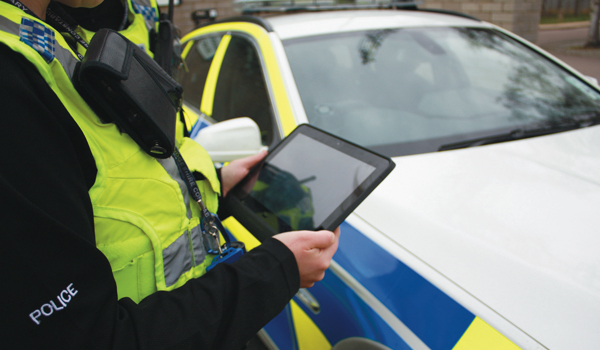Measuring success
It is generally acknowledged that new technology has an essential role to play in helping to improve police performance while simultaneously reducing costs. And the success of body-worn video (BWV) cameras as a crime-fighting tool means it is one area where a clear case can be made for investing in new systems that could have a significant impact in improving efficiencies and increasing prosecution rates.
It is generally acknowledged that new technology has an essential role to play in helping to improve police performance while simultaneously reducing costs. And the success of body-worn video (BWV) cameras as a crime-fighting tool means it is one area where a clear case can be made for investing in new systems that could have a significant impact in improving efficiencies and increasing prosecution rates.
Evidence from both sides of the Atlantic to support the use of BWV cameras by police officers is overwhelming. Attached to an officers uniform, they are capable of recording a point-of-view video-on-demand file and their increasing use is being driven by the Home Office and by operational requirements for widespread adoption within the police and other emergency services.
In his annual report for 2014/15 issued at the end of last year, the Surveillance Camera Commissioner Tony Porter said analysis of police use of BWV was positive; the forces observed exhibited proportionate, transparent and effective use of the technology.
Police forces trialling the deployment of BWV have reported early success particularly in domestic violence cases where the recorded footage has contributed great evidential value in subsequent prosecutions, he said.
A trial of BWV cameras by West Midlands Police (WMP) has confirmed their effectiveness, leading to a 12 per cent increase in prosecutions and a nine per cent rise in early guilty pleas.
Over a six-moth period, 46 cameras were issued to officers in the Birmingham South policing team. The force then evaluated the footage and measured the effect it had on local policing. WMP Inspector Darren Henstock, who led the research, explained that new technology such as BWV was an expensive investment and it needed to be proved that the cameras were actually of value.
He had already participated in a study in the US that had shown promising results. However, Insp Henstock wanted to know if this could be replicated in the UK.
Specifically, he wanted to know if BWV cameras could reduce officer use of force, increase overall satisfaction and reduce the number of complaints received.
When the cameras were to be used was left to the officers discretion. However, it was made clear that they had to be overtly deployed.
Insp Henstock said the experiment was remarkably successful, leading to almost 600 arrests. The officers equipped with BWV cameras achieved 12 per cent more prosecutions than their colleagues and received nine per cent more early guilty pleas.
Public order charges, in particular, increased by 22 per cent. Charges for domestic violence and racial incidents also rose, by 13 and 12 per cent respectively.
One film in particular, which lasted just one minute and five seconds, provided enough evidence to see the offender receive a four-year prison sentence. There is no way a written statement could provide that level of intensity, said Insp Henstock.
Officers also reported no issues with using the cameras according to Insp Henstock, 99 per cent complied with the random allocation. In fact, some even asked for the surveillance to be stepped up.
In the early stages, the cameras had a pre-record feature that continuously filmed and refreshed at 30-second intervals. This was soon switched off, but within three weeks, officers were asking to bring it back as they knew they occasionally missed recording the start of important events.
The BWV cameras also demonstrated benefits in other areas. For example, the officers involved in the study saw an astounding 100 per cent reduction in complaints made against them. Insp Henstock calculated not having to investigate complaints against two local policing units would save £28,000 per year.
When compliant handcuffing was removed from the equation, officer use of force decreased dramatically, particularly physical restraint and non-compliant handcuffing. This saw in a 67 per cent drop in injuries to offenders, which Insp Henstock said no doubt contributed to the reduction in complaints.
Howeve




